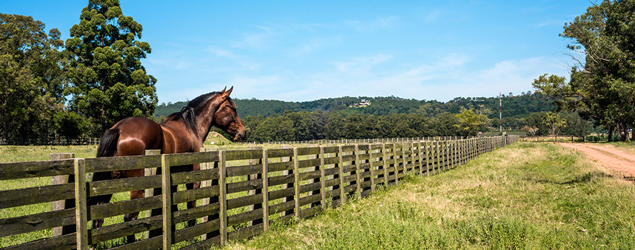
- Purposes of a Fence
- Height of the Fence
- Selecting the Fence
- Fencing Materials
- Gates
- Construction
- Maintenance
- References
Purposes of a Fence
Pastoral scenes of life in the country often include beautiful horses running with tails raised high or peacefully grazing in lush green pastures surrounded by a freshly painted fence. While these fences are truly beautiful, they also serve practical purposes. Fences are necessary to safely confine horses yet provide them with the opportunity to exercise and graze. Because of the natural flight response of horses, they tend to injure themselves in fences more than most other livestock. In addition, many horses are extremely valuable and that justifies the extra cost of building a fence that is safe, strong and attractive. Painted rail fences are not only beautiful to humans, they are highly visible to horses. They appear to a horse as a solid barrier that they are less likely to challenge or run into. When a horse does contact a rail fence, it is less likely to get a hoof hung in it or cut itself on sharp wire ends as might be the case with many standard farm wire fences. When selecting a fence, consider all three of these important functions -- utility (keeping the horses in), safety and aesthetics. How much importance is placed on each function depends on the owner's budget, the value of the animals, and your priorities. A number of alternatives are available for consideration.
Height of the Fence
The heights of fences used for other livestock do not necessarily apply to horse fences. Horses are more athletic and more likely to jump a fence than to go through or under it when spooked or herded. The minimum recommended height for perimeter pasture fences for horses is 5 feet (60 inches). This height will deter most horses from attempting to jump and will also reduce the temptation for people to reach over the fence to pet or feed horses. A 5-foot minimum height fence is both horse-safe and people-safe.
For paddocks (small pastures or turn-out areas fewer than 2 acres in size), corrals and stallion pens, a general rule is that the top of the fence should be at eye level with the horse's head in a natural upright position. This is usually 4 to 6 inches above the horse's withers. This height will discourage fighting over the fence and help prevent horses from leaning over the fence, although the sure way to eliminate leaning and rubbing on any fence is with an offset electric fence wire.
Fences that divide pastures can be 4.5 feet (54 inches) high. The bottom of the fence should be 6 to 8 inches off the ground. This is especially important with wire mesh fences, since horses are less likely to paw at the fence and more likely to keep the fence line grazed. In addition, weed growth is easier to control along the fence line by either application of herbicides or use of a weed-eater if this clearance is left below the bottom of the fence. It also adds 6 inches of height to the fence at no extra cost.
Selecting the Fence
The kinds of fences commonly used for horses include rail (plank or PVC), various forms of galvanized and vinyl coated wire, electric and combinations of these. Whatever the fence is made of, it needs to be highly visible, resistant to damage by horses, durable, attractive and safe for contact by horses.
Rail or Plank Fences
Rail (also called "plank" or "board") fences are popular on horse farms because they are attractive, highly visible and relatively safe. This category includes fences made from treated and/or painted wooden planks nailed or screwed to posts, split rails with rounded ends that slide into holes in posts, PVC plastic boards, and wooden boards coated with vinyl. If a horse runs into a rail or plank fence, the fence is not likely to cause physical harm unless the collision is hard enough to break the rail. A horse is also less likely to get a hoof hung in a rail fence. Probably the only disadvantage to a rail fence is the cost of construction and maintenance. Rail or plank fences are probably the most expensive fences to build, and maintenance expense can be significant.
Wooden planks are usually either oak or treated pine. Pine boards should be treated with CCA (chromated copper arsenate) at a minimum of 0.25 lb/ft3 (0.4 or higher if wood contacts the soil). Water-based paint or a black asphalt or coal tar based paint can be used to protect the wood and add to the beauty of the fence. Treatment of the wood also discourages chewing of the fence but may not be sufficient to prevent chewing when horses are stressed or confined in a small space.
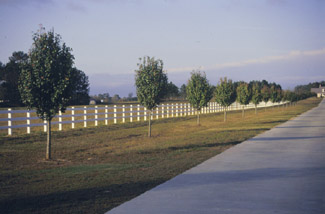 Figure 1. A PVC rail fence makes an attractive picture.
Figure 1. A PVC rail fence makes an attractive picture.PVC plastic fences (Figure 1) are generally more expensive than wood. They are, however, becoming very popular because of their attractiveness and the fact that they do not require painting, since they are the same color throughout the material. If a PVC board breaks, it does not present a jagged end as sometimes happens with natural wood planks. White PVC rail fences do, however, require periodic washing with mildew removing agents, especially in the humid south. Vinyl coated wood is simply wood dipped in a vinyl coating. This product, like PVC, does not require painting but it does require washing to maintain appearance. In addition, the wood inside the vinyl coating can warp with age just like any other board. Treated wood is strong and durable and resists rotting. It has a natural, attractive look but may lack the eye appeal of a painted fence. Usually either 1 x 6 or 2 x 6 boards are used for the rails. Rails made of 1 x 6 boards are less expensive but tend to warp more and are not as strong as 2 x 6 rails. Wood fencing is often painted with a mixture of asphalt or coal-tar mixed with oils. This material is relatively inexpensive and long-lasting. Exterior water-based paints also provide good protection against weather and are available in a wide variety of colors.]
High-Tensile Polymer Fences
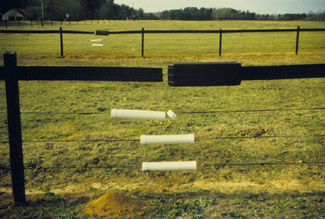 Figure 2. A high-tensile fence with top "rail." Tensioning devices are covered to protect horses from cuts and to allow the fence to be "dropped" quickly if a horse becomes entangled.
Figure 2. A high-tensile fence with top "rail." Tensioning devices are covered to protect horses from cuts and to allow the fence to be "dropped" quickly if a horse becomes entangled.One type of fence has the appearance of a rail fence but is actually a wire fence called a "high-tensile polymer fence." The "rails" consist of vinyl plastic 4 to 6 inches wide with two to three high-tensile steel wires encased (Figure 2). These fences are less expensive than rail fences, are very strong and have a nice appearance and good visibility much like a rail fence. They are, however, wire fences that must be tightened periodically to maintain the proper tension. (This is true of any high-tensile fence.) Some high-tensile polymer wires can be electrified for added security, but a special coating must be used to allow electricity to flow; you'll need to specify electrifying the fence when it's purchased.
Rubber Fences
Rubber belting or rubber strips from old tires and conveyor belts have been used for horse fencing. These have the obvious appeal of being soft and yielding, preventing injury to horses, but they require a good deal of maintenance to keep them tight, since they continually sag with time, especially in the heat of summer. Horses do tend to nibble on the rubber and, with some products made with nylon threads, this has caused colic and/or impaction.
Mesh Wire Fences
Mesh wire fences are strong, durable and considered one of the safest fences for horses. They are less expensive than most rail fences but more expensive than conventional farm woven fences with 4- to 6-inch openings used for cattle and other livestock. The openings in these fences are small enough to prevent hooves being caught in them. They also have no exposed sharp wire ends to cut the animal's skin.
Two types of mesh wire are the diamond mesh (Figure 3a), which uses two wires twisted together in a diamond formation with 2-inch x 4-inch openings, and the square knot mesh (Figure 3b), which has single horizontal lines with the wire spaced 2 to 4 inches apart. This fencing should have a minimum of 12.5 gauge wire unless it is high-tensile steel. A 14-gauge high-tensile steel wire will provide more strength than a 12.5 gauge standard steel wire. A galvanized welded wire fabric with 2 x 4-inch openings is sometimes used because of its low price, but the joints will not hold up under field conditions and it is not recommended for horse fencing.
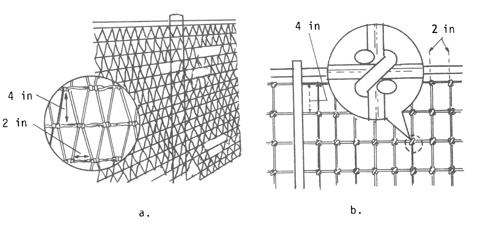 Figure 3. a) A detail of diamond mesh fence. b) Stiff-stay, square-knot fence.
Figure 3. a) A detail of diamond mesh fence. b) Stiff-stay, square-knot fence.Electric Fences
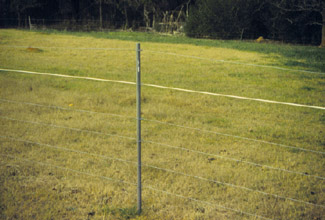 Figure 4. A vinyl-coated wire adds significantly to the visibility of a smooth-wire electric fence. Safety is enhanced when visibility is improved.
Figure 4. A vinyl-coated wire adds significantly to the visibility of a smooth-wire electric fence. Safety is enhanced when visibility is improved.Several materials are used to construct electric fences. They include aluminum wire, high-tensile smooth steel wire, high-tensile steel wire coated with vinyl, and steel wires woven into vinyl tape. Some tapes are considered permanent fencing. They are highly visible to horses since they are about 1½ inches wide. One product contains 10 stainless steel wires 0.016 inch in diameter with polyethylene yarn woven between the wires. These products are stiff and difficult to bend, but these qualities are needed to provide strength and durability to the fence. Aluminum wire and some vinyl tapes and ropes with smaller, more flexible wires are also available, but they are designed primarily for temporary fencing. They provide high visibility and their flexibility makes them easier to move from one location to another, but they do not provide the strength needed for long-term use. Electric fences are very effective in controlling horses once the horse has encountered the fence, but good visibility is extremely important and is not a characteristic of electric fences built with smooth steel wire. To increase visibility, one or more strands of vinyl coated wire or high-tensile vinyl tape should be included in the fence (Figure 4).
High-tensile steel fences allow long stretches of fence to be constructed between two strong corner or brace post assemblies. The key to making these fences work is to put more effort and investment into the brace post assemblies and less in intermediate supports. Between brace posts, the fence can be supported by intermediate posts made of fiberglass or of wood or steel with insulators. Space these posts about 25 feet apart. Short fiberglass or wooden stays can also be placed between the posts to increase visibility. The main purpose of the intermediate supports is to maintain proper spacing of the wires. Tension in the wire is maintained by permanent in-line stretchers and tension springs. Best results are achieved when tensioners are used in conjunction with springs. Wires must be attached to any intermediate posts in such a way that they can move laterally and be tensioned again. Re-tension wires at least once a year, especially in the spring when winter conditions have contracted and stressed the wire and before summer heat will cause it to expand. Wire should be constructed of high-tensile steel and should be at least 12.5 gauge in size. Commonly, one to five strands of high-tensile wire are used in a fence. For a perimeter fence, use four to five strands; fewer strands may be used for temporary cross-fences. For horses, at least one strand of these fences should be more highly visible material, as discussed earlier (Figure 4).
For best results, electrify alternate strands of wire (for example, top, middle and bottom of a five-strand fence) and ground the other wires. This provides a path for electricity to return to the source without depending on the earth. It also improves the performance of the fence, especially in very dry conditions. One added advantage to electric fencing is that it does provide some protection from predators such as dogs, which sometimes like to chase horses. Once a dog has experienced an electric fence, he will not likely get close to it again.
If a properly designed fence charger (known as a "controller" or "energizer") is used, an electric fence is quite safe for use around animals as well as humans. While high voltages are used to shock the animals and cause them to avoid touching the wires again, the extremely short duration of the electric charge prevents damage to animals or humans. An electric fence does require some maintenance. Vegetation growing up around the wires reduces effectiveness. Some contact with vegetation will be overcome by a good low-impedance fence controller, but a large amount of contact will eliminate its effectiveness as the charge is shorted to the earth through the vegetation. Managers must also be diligent to make sure that lightning or other power failures have not affected fence power.
Proper grounding is another important consideration. Instructions are usually included with the fence charger, but the grounding system usually consists of a number of grounding rods driven into the ground spaced at least 10 feet apart and tied together with copper wire. It should be separate from any other electrical grounding systems on the farm. If alternative fence wires are charged and grounded, the fence will be effective even in times when the ground is too dry to conduct electricity. The top wire should be hot to prevent reaching over the fence, and it is usually best to ground the bottom wire to reduce the likelihood of the hot wires being grounded out by vegetation.
Combinations of Fence Types
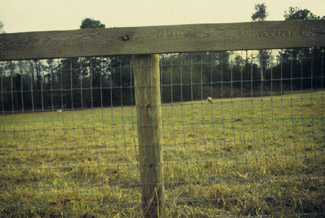 Figure 5. A top rail added to a square mesh fence prevents horses from stretching the fence wires. An electric fence wire installed on the opposite side of the post will prevent horses from rubbing on or chewing the board.
Figure 5. A top rail added to a square mesh fence prevents horses from stretching the fence wires. An electric fence wire installed on the opposite side of the post will prevent horses from rubbing on or chewing the board.A strand of electric fence wire can be added to a rail or wire mesh fence to increase the effectiveness and durability of the fence. If horses are damaging the fence by reaching over it to graze, a strand of electric fence across the top should prevent this. Place the wire on insulators on the opposite side of the post from the mesh wire or rails to prevent short circuiting the fence. A strategically placed strand can also help by discouraging predators. A mesh wire fence can be improved by adding one rail at the top (Figure 5). The rail increases the visibility of the fence and helps deter horses from stretching the wires by resting or pushing on the top, but horses will still push and sometimes chew on the wood unless the top rail is accompanied by an electric fence wire mounted on the other side of the posts. One "rail" of high-tensile polymer fencing (Figure 2), or even a polymer coated wire (Figure 4), at the top of a wire fence will also improve the visibility of the fence and is often more compatible with the post spacing used for the wire fence as compared to using a wooden top rail.
Comparison of Fence Types
As previously stated, the type of fence chosen depends on the priorities of the owner. Table 1 shows some general factors to consider when selecting a fence.
| Table 1. Comparison of Common Fences | |||
| Types | Comparative Cost Index1 (Material Only) |
Approximate Life2 (Humid Climate) - yrs |
Upkeep |
| 4-Rail (Posts spaced 8 feet) | |||
| 1" x 6" Treated Boards | 200 | 10-20 | Medium |
| 2" x 6" Treated Boards | 350 | 10-20 | Medium |
| PVC Rails | 500-600 | 20 | Low |
| High-Tensile Polymer Coated | |||
| 5-inch rail width | 330 | 33 | Medium |
| Mesh Wire (Diamond or 2" x 4" rectangle) | |||
| 12.5 gauge | 150 | 38 | Low |
| High-Tensile Electric3 - 12.5 gauge | |||
| 4 strands | 20 | 25 | Medium |
| 1 strand | 7 | 25 | High |
| Reflective Tape or Rope (Electric) | |||
| 0.5-inch 1-strand (temporary) | 11 | 25 | Medium |
| 1.5 -inch Heavy Duty 2-strand (permanent) | 33 | 25 | Medium |
| 1Cost index figures are to show relative cost, not actual costs. For example, fence with an index figure 25 costs about twice as much per foot as a fence with an index figure of 12. 2Fence life based on combination of post and wire life expectancy. 3Costs of electric controller not included. |
|||
Fencing Materials
Wire
Fencing wire is usually covered with zinc, commonly called "galvanizing," to protect it from rusting. The length of time before wire begins to rust depends on the weather but also on the thickness of the zinc coating. More zinc means more years of service before rusting starts. Fence manufacturers and the American Society for Testing Materials have established "classes" of zinc coatings for fence wire. Class 1 has the lightest coating of zinc and Class 3 has the heaviest (two to three times as much, depending on the wire size). The expected life of a fence depends on many factors, but Class 3 galvanizing can easily add 5 to 10 years of life to fence wire in a humid climate like Georgia's. Make sure when you compare the cost of fence materials that you compare the same class of galvanizing (preferably Class 3). Some suppliers carry only Class 1 galvanizing in order to have a lower price, but if consumers demand a higher quality product, dealers will certainly supply that need.
Some wire is coated with vinyl in addition to zinc. The primary purpose of the vinyl is to increase visibility and improve the attractiveness of the fence, but it also helps protect the wire from deterioration. Some mesh wire products are available on the market with welded joints instead of twisted wire joints. These products are significantly less expensive than standard fencing products, but the joints will not hold up when tested by time and the inevitable stress that will be placed on them in a fence. The best investment is to buy a product designed to do the job over the long term.
Fasteners
Selecting the appropriate fastener to attach fencing to posts is an important step in building a strong, durable fence. All fasteners should be galvanized (preferably Class 3). Nails should have grooves on the shank to help hold the nail in place. Galvanized screws are another option for fastening boards to fences. Good quality insulators are essential on electric fences for longevity and to prevent bleeding off of electrical charge through the posts.
For wire mesh fences, staple pull-out is a common problem when you use softwood posts. To avoid this problem, use 1.75-inch or 2-inch long, 8- or 9-gauge, hot-dipped, galvanized staples with cut points and barbs. When properly installed, a 1.75-inch long staple has approximately twice the holding power of a 1.5-inch staple in a softwood post. If you use hardwood posts, you can use shorter staples because they don't pull out of hardwood as easily.
Fence Posts
Wooden posts are plentiful in Georgia. Some major advantages of wood posts are strength as well as resistance to bending, misalignment and withdrawal. Build permanent fences with decay-resistant fence posts. The most common wooden posts are pine pressure treated with CCA (chromated copper arsenate). These posts have a greenish color, last longer and are harder than posts treated with older treatments such as creosote and Penta (pentachlorophenol). This quality of hardness tends to reduce staple or nail pull-out.
Wood posts from 5.5 to 8.5 feet long and from 2.5 to 8 inches or larger diameter are readily available. The larger the top diameter, the stronger the post. Line posts can be as small as 2½ inches, but larger ones will make the fence stronger and more durable. Corner and gate posts should have a top diameter of at least 8 inches. Brace posts should be 5 inches or more in diameter. It is important to distinguish between the need for posts in a rail or plank fence versus in a wire fence. In a wire fence, most of the load is carried by the corner or brace assemblies. The intermediate or line posts mainly keep the wire spaced properly and can therefore be much smaller. In a rail fence, each section of the fence must be equally strong, requiring the same size posts throughout the fence.
When buying fence posts, make sure they have been properly treated for contact with the soil. Most treated lumber bought in builders' supply stores (including 4-by-4s often used as posts) is treated at 0.25 lb of CCA per cubic foot of lumber. This level of treatment is designed for lumber exposed to the weather but not in contact with the soil. It will not protect against termites or the severe conditions of soil contact. Sawn lumber should be treated at 0.5 to 0.6 lb/ft3 of CCA if it is to touch the earth. Fence posts can be treated at 0.4 lb/ft3. Many people are tempted to use "landscape timbers" for fence posts because they are extremely cheap at times due to over-supply. These timbers are a by-product of the plywood industry. They are what is left over after the veneer has been peeled off a large log. The danger in using these for fence posts is that they are not treated for ground contact, since they are not designed to support a load. Usually, they are not labeled so it is unclear what, if any, treatment has been applied.
Steel posts have four major advantages over wooden posts when used for wire fences. They cost less, weigh less, can be driven into the ground rather easily, and are fire-proof. They also help ground the fence, minimizing damage by lightning. Steel posts vary from 5 to 8 feet long. A wide variety of steel posts are available with widely varying prices and quality, so carefully compare post specifications to be sure you are comparing equal quality. For permanent fencing, steel posts should be galvanized. If you use Class 3 galvanized wire, the wire will usually outlast the posts unless the posts are galvanized.
Steel posts do not have as much strength against bending as wood posts. Wooden line posts can be placed every 50 to 75 feet to help keep steel posts from bending and improve fence stability.
Various kinds of posts are available for electric fence line posts as the requirements for strength are much less than for non-electric fences. Posts are available in wood, plastic, steel and fiberglass. Wood and steel posts require insulators to prevent short-circuiting the fence through the posts. High-density fiberglass posts (commonly known as "sucker rod," since they were originally by-products of the oil industry) make excellent electric fence posts. They are usually gray or white in color, are very strong and durable, and are nonconducting so insulators are not required.
All posts must be long enough for the fence height and depth of setting. Add together the height of the top wire above the ground, the depth of the post in the ground, and 6 extra inches to get the desired length.
Electric Fence Controllers
Most people will agree that touching an electric fence is a very unpleasant experience. The experience for horses is no different. When animals come in contact with an electric fence, the shock they receive affects their nervous system. The severity of the shock depends on the voltage and amperage (current) as well as the duration of the shock and the sensitivity of the animal. It takes at least 700 volts to effectively control short-haired breeds of animals such as horses. The controller that delivers this shock is the heart of any electric fence and should be selected carefully.
Controllers are safe yet effective because of the short duration of the charge. The charge is powerful but does not last long enough to damage the heart or to cause electrical burns. Modern low-impedance controllers have the capacity to power long distances of multi-wire fences and are not affected as much as earlier controllers by some contact with grass or other vegetation. Some chargers will actually retard vegetative growth by burning any vegetation that comes in contact with them.
Controllers are available in battery powered models as well as 120-volt AC models. When 120-volt power is available, the 120-volt models have an obvious advantage since you don't have to buy or recharge batteries. Cost of operation is minimal (usually less than $1 per month) for these units. If commercial power is not available near the fence to be energized, battery-powered units are available to fill this need. These units operate on 12, 24 or 36 volts (one, two or three 12-volt batteries in series). The batteries must be recharged every two to six weeks, depending on the system and amount of use. Deep cycle, marine and RV type batteries are best suited for battery-operated controllers. "Deep cycle" means that the battery is designed to be discharged almost completely before being recharged. Automobile batteries are designed to be almost fully charged at all times and so will not last as long as deep cycle batteries.
Solar collectors are also available to recharge the batteries daily. Solar chargers are usually not as powerful as 120-volt AC chargers, but they do offer an attractive alternative for remote locations where livestock pressure (the tendency for animals to test the fence) is low.
It is important to match the capacity of the controller to the fence you want to charge. Most manufacturers indicate the strength of the unit by the number of miles it will power, but the standards for these ratings are not well regulated. Look for a controller that gives the output voltage delivered at varying loads (measured in ohms. A good controller will deliver 1,000 volts at 100 of resistance. (Lower resistance means a higher load on the controller.) Avoid controllers that do not provide you with this information. A good rule of thumb for sizing controllers is to determine the number of miles of electrified wire in the fence and add at least 25 percent to offset any power drain caused by vegetation touching the fence. For example, if you have 4 miles of five-strand high-tensile wire with three of the strands electrified, you would need a controller rated for at least 15 miles (3 wires x 4 miles = 12 miles + 0.25 x 12 = 15 miles).
Check the charger on a regular schedule and after any lightning storm to make sure it is still working properly. Fence testers are available that are designed to check the voltage on fence wires. A light is also available that can be hung on a fence wire; it indicates from a distance whether or not the wire is energized. The brightness of the light indicates the strength of the charge.
Gates
Horses tend to congregate around gates, so make sure whatever gate used is sturdy and safe. Gates should be aesthetically related to the fence. Steel tubing or pipe gates are routinely used for horses.
Gates should be level with the top height of the fence. Gates into a pasture should be wide enough to allow equipment -- such as tractors, mowers, fertilizer trucks and wagons -- to get into the pasture (a minimum of 14 to 16 feet wide). The minimum width for any gate a horse will be passing through is 4 feet; however, if you foresee the need for equipment to pass through the gate, make it at least 8 feet wide. If gates are to open into lanes, the gate should be the same length as the width of the lane, or another gate may be added to the lane so the lane can be closed off when you move or herd horses. Gates are often hung to swing both ways -- in and out. Avoid gaps between gates and supporting posts to prevent horses from getting a hoof caught or foals from getting their heads caught in the gap. Plans are available from your county extension office for a gate opener that can be operated from horseback.
Construction
Like most construction and maintenance jobs around the farm, fence construction requires proper techniques and common-sense judgment. Every fencing job presents slightly different problems. A few basic principles are good starting points for every fencing job. Here are some to consider.
Establishing the Fence Line
Where a permanent fence is installed on a property line, locate property lines exactly. A mistake here can be very costly. Once this is done and any trees and brush are removed, you are ready to establish the fence line.
On level ground, an end post can be installed at each end of the run and a string or a single strand of wire stretched between the two posts to establish the line. On rolling ground, where hills are too high to sight from one end-post to the next, you can use surveying equipment (if available) to establish the location of intermediate points on the line. Alternatively, intermediate sighting stakes can be driven at the tops of hills. Drive two of these temporary stakes about 8 to 10 feet apart at the approximate position where the line will cross the crest of the hill. If both posts appear to be lined up when sighted from each end post, they represent a true midpoint of the line. If not, you can move them back and forth until they are properly aligned.
If possible, when building a rail or plank fence, the length of the fence should be such that all posts are equally spaced. If the posts are to be spaced every 8 feet, then the length should be an even multiple of 8 feet. Otherwise one section may need to be 5 feet or 3 feet or even 2 feet long, which detracts from the appearance of the fence.
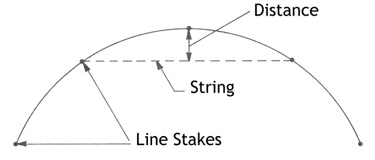 Figure 6. Fence post spacing around curves depends on the sharpness of the curve.
Figure 6. Fence post spacing around curves depends on the sharpness of the curve.When a wire fence must go around a curve, place small stakes every 16 feet around the smooth curve. Then start figuring the post hole positions where the curve is greatest. The sharper the curve, the closer the posts should be. Select three stakes at a point of maximum curvature. String a line from the first to the third stake (Figure 6). Measure the distance from the center stake to the string and space the posts as given in Table 2.
| Table 2. Fence Post Spacing around Curves | |
| Distance from Center Stake to String |
Post Spacing |
| Inches | Feet |
| 8 or less | 12 |
| 8 to 14 | 10 |
| 14 to 20 | 8 |
End- and Corner-Post Brace Assemblies
For any wire fence, corner-post and end-post assemblies are the most important structures in the entire fence. They are the foundation upon which the fence is built. When wire is first stretched, the pulling force on the corner or end may be 3,000 pounds. Winter cold can contract the wire, which increases that force to 4,500 pounds. Design fences to with-stand forces causes by mowers accidentally running into them, trees falling on them, and animals running into them. Both corner and end assemblies must be strong enough to withstand these forces. Additionally, gates are usually hung on end-post assemblies, so the assembly should be strong enough to hold the gate up without sagging.
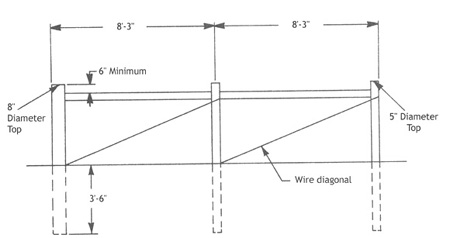 Figure 7. Double span H-brace assembly. Post depths shown are minimum.
Figure 7. Double span H-brace assembly. Post depths shown are minimum.Figure 7 shows proper construction of a double span H-brace assembly for wooden anchor posts. A double span assembly is more than twice as strong as a single span; use it whenever the fence span will be more than 200 feet long. A corner post will need a brace assembly for each fence line leading to it. Post depths shown in Figure 7 are minimums. Use deeper settings for sand or wet soil. One often overlooked detail is the length of the horizontal post between the end post and the brace post. This should be 2 to 2.5 times as long as the height of the fence in order to achieve the proper angle for the diagonal brace wire. It should be attached to the corner and brace posts with a 3/8-inch galvanized steel pin to keep it from moving when the posts move over time.
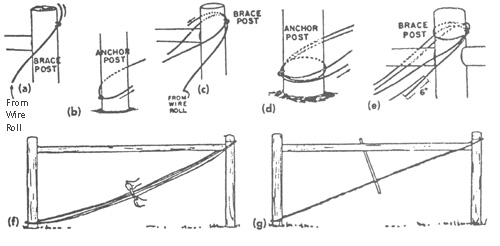 Figure 8. Correct procedure for threading 9-gauge smooth wire for diagonal brace.
Figure 8. Correct procedure for threading 9-gauge smooth wire for diagonal brace.Figure 8 shows the proper way to secure the brace wire. It should be constructed of 12.5 gauge high-tensile wire. The diagonal wire can be tightened with a wooden twitch as shown or with a wire tensioner. Tensioners can usually be purchased with the high-tensile wire. The H-brace is a bracing system in which each component plays an important part, so pay attention to details when constructing these braces.
When a fence is more than 650 feet (two rolls of wire) between corner posts, use braced line post assemblies every 650 feet in the fence line. A braced line assembly is the same as a single span braced corner except that a second diagonal brace wire is used to take fence pull in the opposite direction.
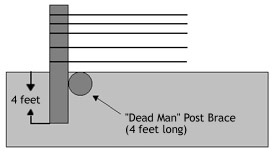 Figure 9. A "dead man" brace is an inexpensive alternative for short fences.
Figure 9. A "dead man" brace is an inexpensive alternative for short fences.Some other brace assemblies are not as strong as the H-brace but they will work in many cases for short pulls and in favorable soil conditions. One is commonly called a "dead man" brace (Figure 9). The end post should be large (10-12" diameter) at least 4 feet in the ground. The "dead man" is a short (4-foot) piece of post buried just under the surface perpendicular to the end post on the loaded side. This positioning supports the post so when the post tries to lean, it must push the "dead man" through the soil sideways.
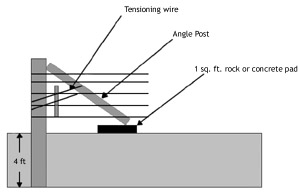 Figure 10. An "angle" brace is another low-cost alternative to the H-brace. The tensioning of the wire, the depth of the main post, and the concrete pad are critical to the strength of this brace.
Figure 10. An "angle" brace is another low-cost alternative to the H-brace. The tensioning of the wire, the depth of the main post, and the concrete pad are critical to the strength of this brace.A second type of brace is called an "angle brace." (Figure 10) The keys to making this brace work are (1) making sure the end post is deep in the ground (about 4 feet), (2) placing a 1- to 2-square-foot rock or piece of concrete under the angle brace post, and (3) properly tightening the tension wire. The tension wire in combination with the angle post gives this brace its strength. If the fence starts to sag, tension can be reapplied by tightening the tension wire.
Fence Post Setting
Steel posts are almost always hand or power driven. Wood posts are frequently driven with power driving equipment (Figure 11). Driving posts is faster than digging holes and tamping (packing) soil around posts. Driving also results in a stronger foundation for the post. Drive posts with the small end down. The results may look strange (large end up), but the resulting fence will be much stronger and damage to the posts during driving is minimized. Corner posts can be driven as well, but it is sometimes necessary and always advisable to drill a pilot hole about 3 or 4 inches smaller than the post before driving. The pilot hole reduces driving resistance and gives more control over the direction of lean of the post. (Drive end posts at a slight angle away from the direction of pull so they will be straight when tensioned.)
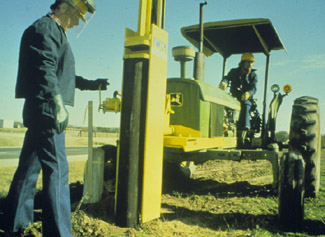 Figure 11. A tractor-mounted post driver.
Figure 11. A tractor-mounted post driver.When posts are not driven, you must dig holes and tamp (pack) soil around the post with a small (approximately 1-inch diameter) rod. While this method is not usually as strong as driving posts, it is important to properly tamp dirt around the posts in order to give the posts as much strength as possible. Place the post in the hole and line it up with other posts using a guide wire or string. Then place a few inches of dirt in the hole and tamp it. In order to achieve proper compaction, the soil should be moist but not overly wet. Filling and tamping is repeated a few inches at the time until the hole is filled with compacted soil. The most important part of tamping is getting the bottom 6 inches of soil properly packed, and this cannot be accomplished if the hole is filled before tamping begins -- as is often done. In general, concrete is not recommended around posts. It reacts with wood and actually causes the life of the post to be shorter than when properly tamped with dirt. Some small rocks or gravel can be added to the soil, but it is important to have a variety of soil particle sizes mixed in. In the long term, a few large rocks will not hold as well as a mixture of rocks and soil or even well-tamped soil.
Set wooden line posts at least 2 feet deep. In most soils, studded "T" (steel) posts need to be driven only until the anchor plate is beneath the surface. For uniform depth, mark the digging tool or steel post to the desired depth. A gauge pole, cut to desired length, is handy for spacing posts. Space line posts about 10 to 12 feet apart for most fences (25 feet for high-tensile wire fences). Narrow spacings are better over irregular ground and in contour fences. Rail fences normally have post spacings of 8 to 10 feet.
Installing Wire on Fences
In general, you will want to install and stretch wire in sections, running from one corner and/or brace post assembly to the next. Always work from the bottom up when installing wire. Install the bottom wire first, then the next highest, etc. Attach wire to the side of the post nearest livestock except where appearance is important. Use galvanized staples or the wire clips that come with steel posts to attach wire to posts. (Of course, fencing insulators must be used on electric fence wire attached to steel or wooden posts.)
 Figure 12. Proper stapling techniques are important to prevent pull-out.
Figure 12. Proper stapling techniques are important to prevent pull-out.Staples should never be smaller than 1.5 inches long, preferably 1.75 or 2 inches. Do not staple the vertical or stay wires of wire mesh fencing. Drive staples so the wire is held close to the post but not tight (Figure 12a). The wire should be able to move through the staple to allow expansion and contraction of the wire. Good brace assemblies and tensioning springs (in high-tensile fences) should keep the wire tight. Avoid driving staples parallel with the grain since that will weaken the grip of the wood on the staple. Rotate slash cut staples in a certain direction depending on whether the staples are right or left cut (see Figure 12b). Place the staples parallel to the grain and then rotate slightly away from the flat faces of the staple joints. This will result in the desired direction of staple penetration (Figure 12c) and a staple that has 40 percent more resistance to withdrawal than staples rotated the wrong way.
Electric Fences
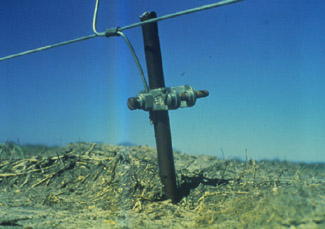 Figure 13. Driven ground rod for grounding an electric fence.
Figure 13. Driven ground rod for grounding an electric fence.One of the best ways of assuring good performance of an electric fence is to provide a good grounding system. For an electrical charge to do its job, it must travel out on the "hot" or energized wire, go through the animal, and return through either the earth or a grounded return wire. A good grounding system will improve current flow and make the fence more effective, especially when the earth is dry. The controller grounding system should be separate (a minimum of 50 feet away) from any other driven grounds or metal objects that might be attached to grounding systems. Failure to do this could cause stray voltage problems on the farm electrical system. The grounding system should consist of a minimum of 24 feet of ground rod. More footage is needed for more powerful controllers. Check your controller instructions for recommendations. This is usually accomplished by driving three or more 8-foot ground rods (see Figure 13) spaced 10 feet apart and connected by #8 copper wire. In addition, place a driven ground rod every half mile of fence and attach it to the grounded wires in the fence. Proper grounding will make the charger's job easier and thus improve its performance. Lightning arresters are available and help protect the controller if the lightning strike is not too close, but they will probably not prevent damage by a direct hit. As a rule of thumb, you need one lightning arrester for every ground rod in the controller grounding system. Space arresters more or less equally around the fence with one near the controller.
One of the best arrangements for electric fences is to alternate charged wires and grounding wires. This arrangement makes the fence much more effective than charging every wire, especially when the ground is dry. If all wires are charged, electricity must return to the controller via the earth, and dry soil makes a poor conductor. Drought conditions usually cause poor forage in the pasture and poorly grounded electric fences, which can mean problems with livestock escaping the fence. Using alternate wires as hot and grounded wires means any time an animal contacts two adjacent wires, he will get a shock. The only disadvantage of this arrangement is its susceptibility to short-out if limbs or other heavy objects fall across the fence and cause two strands to contact each other.
Maintenance
A fence that is properly cared for will give long and trouble-free service. Include some of the following suggestions in your regular maintenance program:
- Repair or replace anchor post assemblies whenever they show signs of weakness.
- Paint wooden fences as needed for longer life as well as appearance.
- Wash PVC or vinyl fences with chlorine bleach solution to remove mildew as needed.
- Re-fasten loose wires to posts and splice broken wires when necessary.
- Keep the fence wires properly stretched. This will be needed once or twice a year for high-tensile fences.
- Keep weeds and brush cleared from the fence line, especially on electric fences.
- Check the voltage on electrical fences on a regular basis. Inspect the fence for problems if voltage begins to fall.
- Plan and follow a regular inspection routine for any needed maintenance.
References
Planning Fences, American Association of Vocational Instructional Materials, 1980.
Planning and Building Fences on the Farm, University of Tennessee Agricultural Extension Service PB 1541, 1996.
Fences for the Farm, Circular 774, University of Georgia Cooperative Extension, 2024.
Status and Revision History
Published on Nov 01, 2000
Published on Feb 20, 2009
Published on May 14, 2009
Published with Major Revisions on Feb 16, 2012
Published with Full Review on Feb 17, 2015
Published with Full Review on May 31, 2024


























































